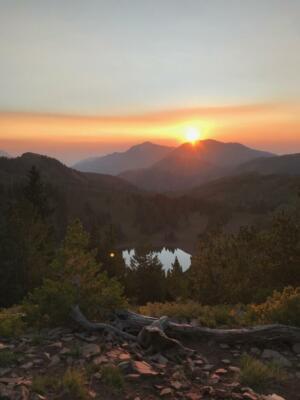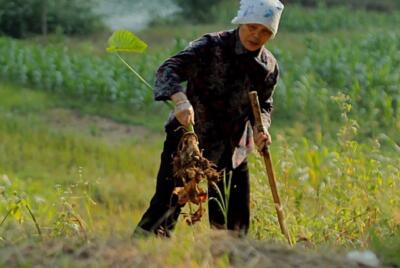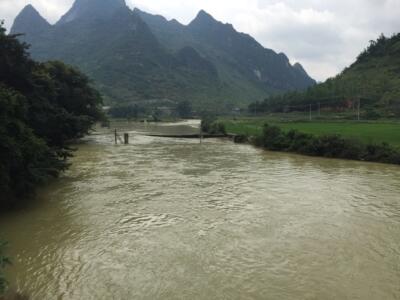The Promise of The Atrial Fibrillation Cure
Our latest book, The Atrial Fibrillation Cure, comes out today! For the week leading up to the release, The Atrial Fibrillation Cure has maintained a Number 1 New Release status on Amazon. This book is the ultimate source for anyone suffering from this condition. And let me share with you the “promise” of The Atrial Fibrillation Cure which is what you’ll read in the first 11 pages of the book.
___________________________________________________________
Much of what you’ve heard about AFib is true. Much isn’t. Here’s the real story.
The first time you experience atrial fibrillation is likely to be the scariest moment of your life.
Everything is fine. And then, just like that, it’s not. All of a sudden your heart is pounding away.
One hundred and forty beats a minute.
Then one hundred and sixty.
Then one hundred and eighty.
That’s two or three times faster than it should be going. Just like that, something you’ve taken for granted for your entire life instantly becomes the only thing that matters. You can feel it throbbing in your neck. You can hear it pounding in your ears. Your chest hurts. You become lightheaded.
If you’re standing, you sit down. If you’re sitting, you lie down. You think you’re dying.
What is going on?
“Oh no, I’m having a heart attack,” you think, and the sound of that thought seems to be screaming in your head.
You reach for the phone. The numbers seem so small. Your hands are shaking.
“It’s just three numbers, for goodness sake, why can’t I dial three simple numbers!?”
It feels like it’s taking forever. And it feels like, at any second now, it might be too late.
Finally, the call connects.
“911, what’s your emergency?”
“I… don’t know… my heart… it’s… out of control.”
“Stay calm,” the emergency dispatcher says. “Help is on its way.”
The dispatcher stays on the line and tries to collect some additional information from you. Your name. Your address. Your location inside your home. You’re having trouble answering basic questions. Your thoughts turn to your family.
“Will I ever see them again?”
If you’re a praying person, this is when you pray. And sometimes even if you’re not a praying person, this is when you pray.
The operator asks if you can make it to the front door. You say that you’ll try. Everything seems like it’s happening in slow motion. Everything, that is, except your heart; it seems like it’s beating even faster now.
“How is that even possible!?”
You make it to the door. You unlock the deadbolt. Somehow, that simple act feels like a victory. You slide to the floor. There’s nothing to do, now, but wait.
If you live in an urban area, you might wait for about six minutes; that’s the average wait time, for instance, in the U.S. state of Illinois. If you live in a more rural area, it might be 35 minutes or more before someone comes to help you; that’s how long it takes, on average, in Wyoming.[i] Either way, these are likely to be the longest minutes of your life.
Who Gets AFib?
If you’ve had an experience like this, or know someone who has, you’re certainly not alone. Atrial fibrillation is a condition characterized by unpredictable episodes of chaotic electrical activity in the heart’s upper chambers, causing rapid and irregular heartbeats that just gets worse with time if not treated. It is the most commonly diagnosed arrhythmia (a condition in which the heart beats abnormally) in the world. U.S. presidents George H.W. Bush and Richard Nixon both had it. So did vice presidents Joe Biden and Dick Cheney. So did singers Barry Manilow and Elton John. So did comedians Ellen Degeneres and Howie Mandel. So did basketball hall of famers Larry Bird and Bill Bradley. The list goes on and on.
One in four American adults will suffer from atrial fibrillation at some point in their lives,[ii] and some studies suggest that, for some groups in the United States, the risk of developing AFib might be as high as one in three.[iii] All told, more than 60 million adult Americans are likely to suffer at least one AFib episode in their lives. And that’s just in the United States; the global population is also growing, it is also aging, and the incidence of AFib appears to be increasing. Worldwide, 65 million people over the age of 35 have already been diagnosed with AFib.[iv] Many, many more simply haven’t been diagnosed yet.
These people do not suffer from this condition alone. Their partners suffer, too. So do their parents, siblings, children and friends. And because the average cost for treating atrial fibrillation hovers around $20,000—and is often much more than that,[v] even people who are fortunate to not have had a personal experience with AFib are indirectly impacted by higher insurance rates that support others in the pool, or higher taxes to support those who are uninsured, under-insured, or insured through government programs. That’s not to mention the costs attributed to lost productivity.[vi]
If you’re reading this book, though, chances are that you have had a direct experience like the one described above, or you know someone who has. Usually, these are frightening experiences that impact older people, but that is changing.
AFib Now Strikes the Young
We’ve seen those changes first-hand. What we are going to cover in the rest of this book represents more than 20 years of our research and clinical experience in treating thousands of AFib patients around the world.
Cardiologists who specialize in arrhythmias are called electrophysiologists, or EPs for short. Back in the 1990s, a newly minted EP, fresh out of residency, would likely have been very surprised to have met an AFib patient under the age of 50. Just a few decades later, though, the patient demographic landscape has changed. Now, doctors regularly see patients who are seeking treatment for AFib in their 40s, their 30s, and sometimes even their 20s. That’s in no small part because of our dreadfully poor diet and exercise habits, ever increasing waistlines, lack of restorative sleep, and over-stressed lives—a perfect storm for premature aging and AFib (as we’ll come to see quite well in Chapter 1.) Indeed, AFib may be a warning sign that you are aging too fast and that you may be wearing out your heart long before its time.
And, in fact, you may be wearing down everything, right down to your chromosomes. For example, our study of more than 3,500 patients demonstrated that people with atrial fibrillation tend to have shorter telomeres—the deterioration-protective caps at the ends of each chromosome—which is a sign of premature aging.[vii] So, if you have been diagnosed with AFib, it’s not just your heart that is at risk; your whole body may be aging faster.
Another reason why we are seeing so many more young people with AFib is a positive one. We now have a myriad of consumer technologies that can detect AFib easier and earlier than ever before. Many smartwatches can now detect signs of potential AFib even before an arrythmia episode occurs. As tech giants eagerly promote consumer “wearables” that can easily diagnose this condition without the help of a doctor, what was once a rarely talked about heart condition now is a common topic in consumer technology spaces. These devices are a big part of the reason why more than 2 million Americans who are under age 65 will be diagnosed with atrial fibrillation in the coming year alone.[viii]
Gavrilo’s Journey
And there is another reason for the increase in people seeking information about atrial fibrillation—a reason exemplified by the experience of a 27-year-old patient named Gavrilo.[ix] His story begins during the holidays.
“For Christmas, my fiancée offered to pay for a pretty extensive DNA test for both of us, and I was excited for several reasons, both of which were related to the fact that I am adopted,” the software engineer from San Francisco explained. “First, I really wanted to better understand where my family came from. I’d always been told that part of my family came from Serbia, but I didn’t know anything more than that. Second, because I don’t know my birth parents, I can’t ask them about my family health history. Does cancer run in our family? Does heart disease? I have no idea. So, I wanted to know as much as I can to fill in all those blank spots.”
Gavrilo’s DNA test showed he had inherited one copy of each of the two atrial fibrillation SNPs (which stands for single nucleotide polymorphisms and is pronounced “snips.”) This genetic abnormality upped his lifetime risk of AFib to nearly 1 in 2.
“Honestly, up until that point, I don’t think I’d ever even heard of atrial fibrillation,” he said, “but the test sent me into ‘research mode,’ and I was pretty surprised to learn how common it actually is.”
He was also surprised to learn how much it could impact his life, if it wasn’t addressed. Not only were his chances of getting AFib higher, but so was his risk of blood clots and strokes.
“I was about to be married,” he said. “We were already talking about having children, and obviously I wanted to make sure I would be around for all that, but also that I would be able to do all of the things I never got to do with my own birth father—wrestling around, playing soccer, going on hikes, all that sort of stuff.”
Gavrilo had never had an episode of AFib, and he was determined to do everything he could to make sure he never would—thus his scramble for answers about what he could do to prevent this condition from ruining his life. In doing so, Gavrilo joined other “proactive preventers” who have seen the destruction AFib has brought into the lives of their parents, grandparents, or siblings, and are committed to keeping it from striking them in the way it did their loved ones.
Although it is exceptionally common, AFib doesn’t get much attention in the media. It’s not a well-known disease. Like Gavrilo, most people hadn’t even heard of it until they have been diagnosed with it, had a loved one who had it, or learned they had a genetic predisposition for it. But once a diagnosis is made—whether in the emergency room, prompted by an EKG-enabled smartwatch, or precipitated by a genetic test, everyone wants to know as much as they can.
That’s probably why you’re here. You’ve been looking for answers. And, if you’re like many people, much if not most of what you’ve learned so far is likely quite disheartening.
You might, for instance, have already run across the statistic that 14 percent of people diagnosed with AFib will pass away within one month of diagnosis.[x] That’s a research-backed estimate, although it’s also important to put this stat into context: the vast majority of people diagnosed are over 65. Even still, 65 is hardly “old.” Or it shouldn’t be, at least. Today, our mid-60s are a time in which most people should be able to live a healthy and active life, confident that they have decades more to come.
You’ve probably also learned—either by experience, from a doctor, or by doing your own research—that this arrhythmia often comes with palpitations, rapid heart rates, dizziness, chest pain, shortness of breath, lightheadedness and, sometimes, fainting spells. You’ve also likely discovered that the drug options for treatment come with a long list of side effects, increased risks for other debilitating conditions, and a substantially reduced quality of life. You may have found out that AFib drastically increases the risk of strokes, heart failure, cognitive decline, and dementia. In fact, every time a person’s heart shifts into AFib, the blood flow to their brain is compromised, meaning their brains are constantly being starved of oxygen.[xi] As a result, their brain may actually shrink, potentially putting them at risk of suffering from decreased memory, difficulties in language use, challenges in how their brains processes visual images, and trouble paying attention.[xii] In fact, our research team has discovered that many of the same biomarkers of brain injury that are elevated after a concussion are also chronically high in atrial fibrillation patients—a reflection of the chronic insult of the abnormal heart rhythm on the brain.[xiii] Indeed, one study showed that fully 40 percent of people with AFib have visible brain damage on a MRI, even if they have no prior neurologic symptoms.[xiv] And all of these brain changes may help to explain why so many people whose have always felt quite intelligent and “high functioning” come to us for help; their brains are no longer capable of functioning at high levels when their heart is out of rhythm.
Indeed, the outlook sure seems bleak. So it is no wonder that researchers have found that people who have been diagnosed with AFib are more likely to report declines in their satisfaction at work and home, a decrease in enjoyment of leisure time, a reduction of social activities, and a drop in their satisfaction with their sex lives.
But it’s time for a change in perspective.
AFib can be the worst thing that ever happens to you—but it can also be the best.
No, really.
AFib is a canary in the coalmine when it comes to many other diseases—a literal heart-felt warning that something is amiss and even more is likely to go wrong, very soon. Because of this, the health optimization strategies offered in this book won’t just help you prevent and reduce the occurrence of dangerous arrhythmias; these strategies will help you live longer, healthier and happier lives in every way.
And so…
… if you don’t want to take handfuls upon handfuls of medications for the rest of your life…
… if you don’t want to go from one doctor to the next…
… if you don’t want to be a prisoner to your condition…
… if you don’t want “the healthy part” of your life to be over…
… if you don’t just want hope, but direction…
… and if, indeed, you’d like to start working toward a life that is better than it was before the words “atrial fibrillation” were part of your vocabulary…
… then this book is for you.
Feeling a bit skeptical?
Maybe a lot skeptical? That’s good. We live in a world in which it’s often far easier to find snake oil than real science, and where people throw words like “cure” around without regard for the damage that can be done to people who get their hopes up, only to have those hopes dashed on the rocks of reality. In this journey, your skepticism will serve you well.
But skepticism and optimism are not mutually exclusive ideas. And the science suggests that there’s plenty of room for people with AFib to feel hopeful and confident about the future, especially if those people are willing to ask questions and seek answers.
And at this point, you probably have a lot of questions related to the path we will explain in this book. Some of the common ones include:
Do I have to quit my doctor?
Do you like your doctor? And does your doctor want you to be well? If so, then you should very much keep that doctor on your team. And, to be clear, this book is absolutely NOT a replacement for a doctor. (This book is intended to help educate you about AFib. It is not intended to be a substitute for professional medical advice, diagnosis, or treatment!) And, in fact, if you don’t have a doctor, what you’re going to learn in this book is that you really need to find one. In particular, you need to find a great electrophysiologist—a doctor who specializes in arrhythmia care and can help you understand your heart by helping you understand what it’s trying to tell you. (More on that later.)
Do I have to be a risk taker?
Absolutely not. The risks are greater—so much greater—for those who stick to the status quo of a lifetime of medications and increasingly debilitating symptoms. Studies show that not only can the lessons in this book extend your life, but following the guidelines offered here will likely, and quite dramatically, improve the quality of your life.
Is this something only for young people?
By young do you mean 80? Patients in their late 80s have used the lessons in this book to beat back their AFib by taking advantage of transformational procedures, giving up blood thinners and heart rate controllers, and making lifestyle choices that help them optimize their lives.
Do I have to be into technology?
No, but you should be willing to collect some very basic data about your life—tracking your meals and workouts—as well as wear an EKG-enabled smartwatch. If you’re tech-savvy, all the better, but the basic tech that makes The AFib Cure possible is so simple a toddler could use it.
This isn’t speculative. It’s true that the idea of a “cure” for atrial fibrillation doesn’t align to the traditional view of this condition and can still, for now, rightly be called an “alternative” course of treatment, but it’s also a course of treatment that is backed by published medical studies—lots of them.
It’s also backed by a lot of people’s experiences. There’s a quickly growing group of people who have resolved to reject the traditional view that atrial fibrillation is best treated with daily handfuls of medications and that, even then, it always gets worse over time.
And here’s the really good news: The AFib Cure can work for anyone.
That doesn’t make it right for everyone, though, for there’s a big difference between people who can succeed on this plan and those who would be better off just sticking to the traditional way of dealing with this condition.
The traditional treatment regimen is good for people who:
1. Accept atrial fibrillation as a lifelong medical problem.
2. Don’t mind taking medications for the rest of their lives.
3. Believe that feeling bad is just part of getting older.
The AFib Cure requires people who are:
1. 100 percent committed to seeing an immediate improvement in their lives.
2. Believe it’s important to do everything they can to put AFib into remission by prioritizing natural interventions.
3. believe that age doesn’t need to be an indicator of health.
There are a lot of people in that latter group. In this book, you’re going to meet some of them. Their stories are inspiring. More importantly, their experiences provide a roadmap for those who want to slow, stop and even reverse their AFib.
To do that, though, we can’t just give you a “do this” and “don’t do that” checklist. To take full advantage of the transformative power of this guide, you’ll need to develop a better understanding of the mysteries of this condition. Indeed, you’re going to need to understand what’s happening in your heart and in your body, and why. You don’t need to go to medical school to “get it” though. Once it’s been explained in the right way, anyone can learn what they need to know to mount a sophisticated attack on their atrial fibrillation.
Are you ready for that? If so, there is absolutely no time to lose.
That’s what the family of a 55-year-old police officer named Carl recently learned.
Like a lot of people who are first diagnosed with atrial fibrillation, Carl was almost immediately put on a very commonly prescribed antiarrhythmic medication, flecainide, which was intended to decrease the amount of time his heart spent out of rhythm.
Pills are the direction most patients go. Indeed, that’s the direction most doctors advise them to go. It’s the easy road, after all—or at least it looks that way on the surface.
Pop a few pills, and your heart will stop going crazy all the time. No invasive procedures are needed. No big changes in your life are required. That’s what patients are often told, at least. And even when they’re not told that directly, it’s often what they come to tell themselves.
But the side effects of flecainide can be awful. There’s fatigue, brain fog, weakness, dizziness, tremors and headaches. Weight gain, anxiety and depression are common. Vision problems. Nausea. Diarrhea. And even though this medication can substantially reduce a patient’s risk of another AFib episode, some research has suggested that it might increase the risk of sudden cardiac death by 50 to 60 percent.[xv]
And notwithstanding the serious side effects of medications like flecainide, they don’t actually work very well. With the exception of amiodarone, your chances of an antiarrhythmic keeping your heart out of AFib for a whole year is 50-50 at best.[xvi]
After a few months of taking flecainide, Carl hadn’t had any more AFib attacks and he wasn’t aware of any side effects, but he knew he didn’t want to be on this or any other AFib medications for the rest of his life. That’s why he came to see us for a second opinion. He wanted to talk about other options that didn’t include more medications.
Carl was often stressed at work and rarely exercised. He knew he needed to start eating better and get his weight and blood pressure under control, too. “You’re going to need to make some pretty big decisions about the way you live your life,” we told him. “You’ve got so much to live for, but we need to get your life back into rhythm.” And because there was a chance that optimizing his lifestyle wouldn’t be enough to get him off the medications and keep his heart in rhythm, we also talked about the possibility of a procedure called an ablation, an important step for many people who wish to cure their AFib.
“OK,” he said. “I think I’m ready for that, but let me give it some thought.”
He went home to think over the various options. That night there was a big snowstorm, and the next morning he went out to shovel his yard. When he didn’t come in, after a while, his wife went out to check on him and found him lying face down in the snow. He had gone into cardiac arrest.
Was flecainide to blame? We can’t know for sure. When he arrived at the hospital there was no sign of heart failure or any serious arterial blockages in his heart, but it had to have been something. Even if it wasn’t the flecainide, though, we know that people recently diagnosed with AFib are nearly five times more likely to go into cardiac arrest.[xvii]
The paramedics were able to resuscitate him and, once they got him to the hospital, doctors put him on life support, but permanent damage to his brain had developed. Carl was surrounded by his family when they took him off life support.
None of us knows how much time we have left on this planet.
But those with an AFib diagnosis can be assured that, if they’re not willing to make some pretty big changes to their lives, their time is even more limited. But even if AFib doesn’t kill you, if you don’t address it, and soon, it is only the start of your problems.
That’s certainly not the most cheerful way to begin a book about fighting AFib, is it? But this is the reality of the disease we’re fighting, and of the world in which we live. It’s important that we talk openly and honestly about what atrial fibrillation is, and what it can take from us. It’s important that we don’t talk about this like its no big deal.
This isn’t a condition that simply makes life harder, more painful, or more frustrating. This is a disease that can do all of that and takes lives, too. And it can take them in tragic ways.
That’s the bad news.
But there’s also good news. And it’s really good news.
All over the world, people are learning that it’s possible to fight this disease. They’re learning that they can change its impact on their lives. Some have beaten it into complete remission and will never be impacted by it again.
Indeed, they’ve cured their AFib.
___________________________________________________________
References
[i] Snibbe, Kurt. (June 7, 2018). 50 years of calling 911: How many still call and how fast (or not) is the response time. San Jose Mercury News.
[ii] Lloyd-Jones, D., Wang, T., Leip, E., et al. (2004). Lifetime risk for development of atrial fibrillation: the Framingham Heart Study. Circulation.
[iii] Mou, L., Norby, F., Chen, L., et al. (2018) Lifetime Risk of Atrial Fibrillation by Race and Socioeconomic Status: ARIC Study (Atherosclerosis Risk in Communities). Circulation: Arrhythmia and Electrophysiology.
[iv] Chugh, S., Havmoeller, R., Narayanan, K., et al. (2014). Worldwide epidemiology of atrial fibrillation: a Global Burden of Disease 2010 Study. Circulation.
[v] Delaney, J., Yin, X., Fontes, J., et al. (2018). Hospital and clinical care costs associated with atrial fibrillation for Medicare beneficiaries in the Cardiovascular Health Study and the Framingham Heart Study. SAGE Open Medicine.
[vi] Stewart S., Murphy N., Murphy N., et. al. (2004). Cost of an emerging epidemic: an economic analysis of atrial fibrillation in the UK. Heart.
[vii] Carlquist, J., Knight, S., Cawthon, R., Bunch, T. et al. (2016). Shortened telomere length is associated with paroxysmal atrial fibrillation among cardiovascular patients enrolled in the Intermountain Heart Collaborative Study. Heart Rhythm.
[viii] Benjamin, E., Virani, S., Callaway, C., et al. (2018). Heart disease and stroke statistics—2018 update: a report from the American Heart Association. Circulation.
[ix] The stories in this book are based on interactions and treatments with diagnosed AFib sufferers; in some cases names and other biographical details have been changed to protect the confidentiality of patients and their families. The life circumstances and outcomes these example patients have experienced, though, are absolutely representative of patients seen by Dr. Day and Dr. Bunch.
[x] Bassand, J., Virdone, S., Goldhaber, S., et al. (2019) Early risks of death, stroke/systemic embolism, and major bleeding in patients with newly diagnosed atrial fibrillation. Circulation.
[xi] Gardarsdottir, M., Sigurdsson, S., Aspelund, T. et al. (2018). Atrial fibrillation is associated with decreased total cerebral blood flow and brain perfusion. EP Europace.
[xii] Gaita, F., Corsinovi, L., Anselmino, M., et al. (2013). Prevalence of silent cerebral ischemia in paroxysmal and persistent atrial fibrillation and correlation with cognitive function. Journal of the American College of Cardiology.
[xiii] Galenko, O., Jacobs, V., Knight, S., Bunch, T. et al. (2019) Circulating levels of biomarkers of cerebral injury in patients with atrial fibrillation. The American Journal of Cardiology.
[xiv] Conen, D., Rodondi, N., Müller, A., et al. (2019). Relationships of overt and silent brain lesions with cognitive function in patients with atrial fibrillation. Journal of the American College of Cardiology.
[xv] Taylor, P., Clark, A., Marsh, A., et al. (2013). A chemical genomics approach to identification of interactions between bioactive molecules and alternative reading frame proteins. Chemical Communications.
[xvi] Komatsu, T., Satou, Y., Tachibana, H., et al. (2006) Efficacy of long-term flecainide therapy in patients with paroxysmal atrial fibrillation—Analysis based on time of onset. Journal of Arrhythmia.
[xvii] Okin, P., Bang, C., Wachtell, K., et al. (2013). Relationship of sudden cardiac death to new-onset atrial fibrillation in hypertensive patients with left ventricular hypertrophy. Circulation: Arrhythmia and Electrophysiology.








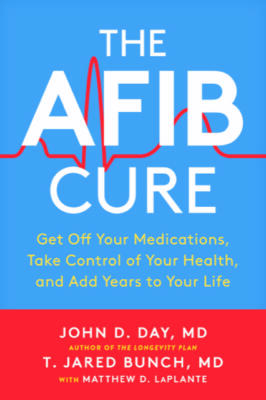
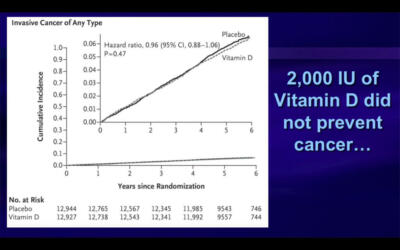

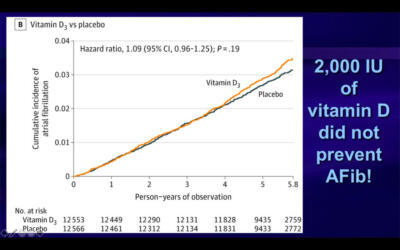
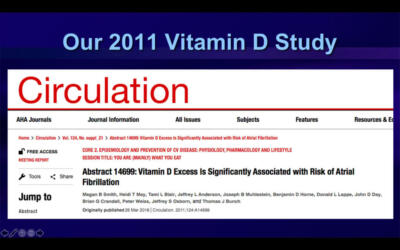
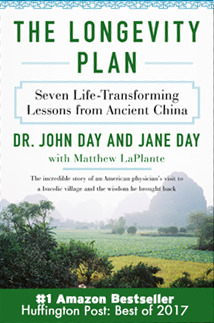


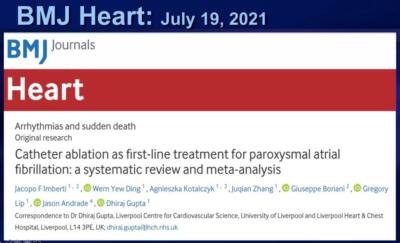
 Ablation or Drugs First
Ablation or Drugs First